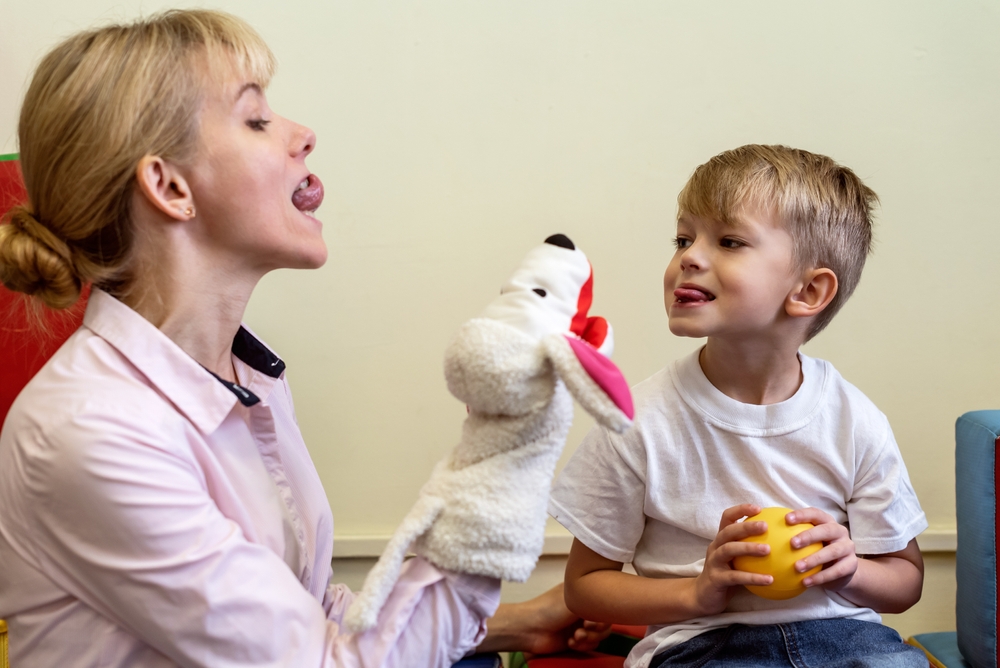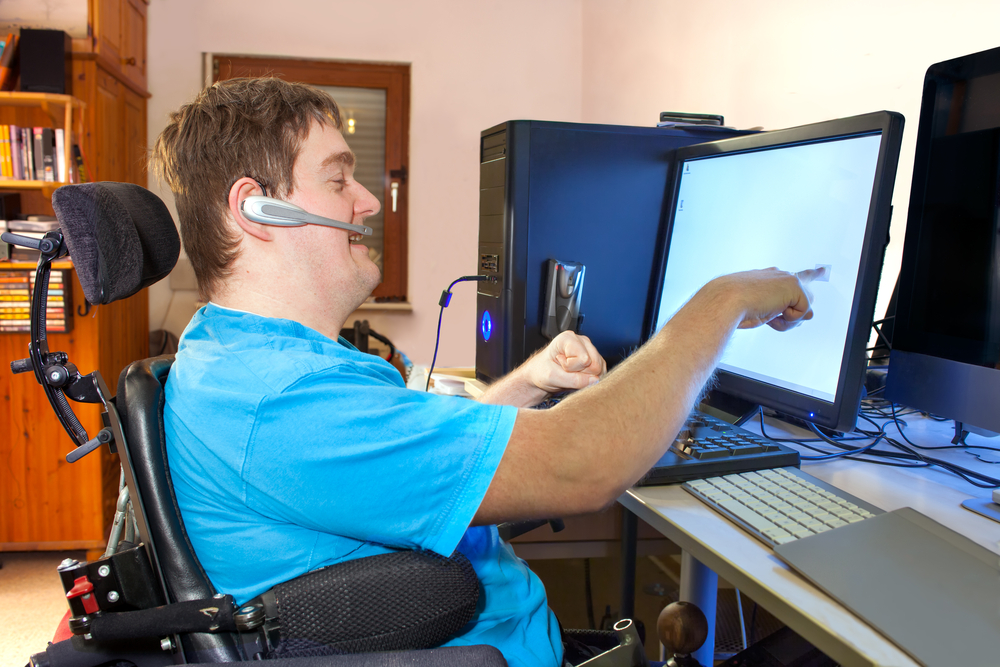Make an Appointment
Stuttering can be a challenging communication disorder that affects many children and their families. In today’s blog, we explore the powerful role of speech therapy in transforming the communication abilities and confidence of children who stutter. Using a client-centred approach, modern speech therapy offers a range of innovative, research-backed strategies designed to help children improve fluency, express themselves clearly, and build self-esteem. Whether you’re a parent, caregiver, or educator, understanding these therapeutic options is key to supporting a child’s journey toward confident communication.

What is Stuttering?
Stuttering, also known as stammering, is a speech disorder characterised by disruptions in the flow of speech. These disruptions may include repetitions of sounds or syllables, prolongations, and involuntary pauses or blocks. While the exact cause of stuttering is not fully understood, research suggests that a combination of genetic, neurological, and psychological factors contribute to its development.
Why Focus on Speech Therapy for Children Who Stutter?
Speech therapy is essential for children who stutter for several reasons:
Early Intervention is Key: Early diagnosis and treatment can significantly improve speech fluency and reduce the impact of stuttering as children grow.
Improved Communication: Effective therapy strategies help children communicate more smoothly, reducing frustration and anxiety when speaking.
Boosted Confidence: As speech improves, children gain confidence in social and educational settings, leading to better participation and self-expression.
Family Empowerment: Speech therapy often involves training and support for parents, helping them facilitate positive communication environments at home.
Understanding both the nature of stuttering and the benefits of early, tailored intervention is crucial. Research from the Australian Speech Pathology Association highlights that early, proactive treatment can lead to significant long-term improvements.

Traditional and Modern Approaches in Speech Therapy
Speech therapy for children who stutter employs a range of techniques that have evolved over the years. Two primary approaches used are:
Fluency Shaping Therapy:
This approach focuses on modifying the overall speech pattern. Techniques may include controlled breathing, gentle voice onsets, and slow, deliberate speech. The goal is to help the child develop a smoother, more fluent style of speaking.
Stuttering Modification Therapy:
Unlike fluency shaping, stuttering modification focuses on reducing the severity and tension associated with stuttering, rather than eliminating it entirely. Techniques include identifying moments of stuttering, using gentle onsets, and developing self-correction strategies.
- Learn more about stuttering modification at Speech Pathology Australia.
Parent and Caregiver Involvement
Effective speech therapy for stuttering does not solely rely on in-therapy sessions. Involving parents and caregivers in the therapeutic process is crucial. Training sessions and workshops equip caregivers with strategies to provide support at home, creating a consistent practice environment for the child. This holistic involvement ensures that therapy is reinforced throughout the child’s daily life.
- Research Insight: Studies indicate that parental involvement in speech therapy leads to better outcomes in terms of fluency and self-esteem (Source: Australian Journal of Speech-Language Pathology).
Technology-Assisted Interventions
Advancements in technology have introduced innovative tools to supplement traditional speech therapy. Mobile applications, computer-based programs, and telehealth services now allow for interactive practice and remote support:
- Mobile Apps: These apps provide exercises, games, and feedback to help children practice fluency shaping techniques.
- Telehealth: Virtual speech therapy sessions offer flexibility and the opportunity for regular, real-time feedback without the need to travel.
Such tools are especially beneficial for families in remote areas or with limited access to specialised services.
- For more information on technology in speech therapy, visit NDIS Telehealth Services.
Physio Inq’s Role in Enhancing Speech Therapy Services
At Physio Inq, we understand that effective therapy is about more than just sessions, it’s about comprehensive, integrated care. Our allied health team, which includes speech pathologists, ensure that the overall treatment plan supports the child’s communication development alongside other aspects of their wellbeing.
Our Speech Pathology services integrate traditional therapy with modern digital tools, creating a well-rounded approach to stuttering therapy. Our commitment to continuous education and cutting-edge practices ensures that our clients receive state-of-the-art care designed to foster long-term improvements.

Implementing effective speech therapy strategies for children who stutter involves practical, actionable steps. Here are some key approaches:
1. Structured Therapy Sessions
- What to Do: Schedule regular therapy sessions with a specialised speech pathologist. Consistency is crucial for progress.
- How It Helps: Provides continuous, consistent practice, reinforcing techniques and building muscle memory for fluent speech.
- Action Step: Engage in sessions that incorporate both fluency shaping and stuttering modification techniques.
For expert support, explore Physio Inq's Speech Pathology services.
2. Home Practice and Parental Involvement
- What to Do: Integrate daily practice at home by using simple exercises, reading aloud, and encouraging conversational practice.
- How It Helps: Reinforces therapy concepts and builds confidence in everyday interactions.
- Action Step: Use recommended exercises from your therapist’s plan and participate in parent training workshops.
Check out parent training resources at Australian Speech Pathology Association.
3. Utilise Technology-Enhanced Tools
- What to Do: Incorporate mobile apps and online platforms designed to support speech therapy. Practice exercises on a tablet or computer to receive immediate feedback.
- How It Helps: Offers interactive and engaging methods that can make practice fun and effective, particularly for tech-savvy children.
- Action Step: Download and regularly use reputable apps recommended by your speech therapist.
Discover more technology-based interventions at NDIS Telehealth Services.
4. Create a Supportive Environment
- What to Do: Ensure that the home environment is conducive to practice. Use quiet, well-lit spaces for therapy sessions and home practice.
- How It Helps: Minimises distractions and creates a calming space that promotes focus.
- Action Step: Work with your therapist to design a ‘therapy corner’ at home and integrate structured practice times into your daily routine.
For environmental tips, see our guidance on Occupational Therapy solutions.
5. Ongoing Assessment and Adaptation
- What to Do: Regularly monitor progress through assessments and feedback sessions. Adjust therapy goals and techniques as needed.
- How It Helps: Ensures that the therapy remains effective and responsive to the child’s evolving needs.
- Action Step: Schedule periodic reviews with your speech pathologist to refine your therapy program.

Benefits and Outcomes
Implementing effective speech therapy for children who stutter can lead to remarkable improvements in both communication and overall quality of life. Here are some of the key outcomes:
Enhanced Communication Skills
Children who receive consistent speech therapy learn to articulate their thoughts with greater clarity. This improvement in communication not only reduces frustration but also fosters better social interactions and academic performance.
- Evidence: Studies from Speech Pathology Australia indicate that early intervention in stuttering leads to significant improvements in fluency over time.
Increased Confidence and Reduced Anxiety
As speech improves, children gain confidence in their ability to communicate effectively. Reduced anxiety around speaking in public or participating in class becomes a catalyst for social inclusion.
- Evidence: Research published in the Australian Journal of Speech-Language Pathology shows that targeted therapy interventions can significantly boost self-esteem in children who stutter.
Improved Social Participation and Academic Engagement
Better communication skills lead to more active participation in social and educational settings. This engagement enhances cognitive function and provides children with more opportunities for personal growth and learning.
- Benefits: Social interaction is a key component of healthy development, and as children become more fluent, they are able to build stronger relationships with peers and teachers.
Empowerment Through Integrated Care
When speech therapy is integrated into a comprehensive treatment plan, including the use of technology, parental involvement, and home practice, the benefits extend beyond improved speech. Children experience a holistic improvement in their overall functionality, increasing their independence and reducing the stress on their families.
For expert, integrated care, learn more about Physio Inq's Speech Pathology services.

Frequently Asked Questions (FAQs)
Q: What is stuttering and why does it occur in children?
A: Stuttering is a speech disorder that involves disruptions in the flow of speech, such as repetitions, prolongations, or blocks. It is believed to result from a combination of genetic, neurological, and environmental factors. Early intervention is key to managing and reducing stuttering.
Q: How does speech therapy help children who stutter?
A: Speech therapy provides specialised techniques like fluency shaping and stuttering modification that improve speech patterns. It also includes strategies to reduce the anxiety associated with speaking, helping children communicate more confidently. For more details, visit Speech Pathology Australia.
Q: What role do parents and caregivers play in speech therapy for stuttering?
A: Parental involvement is crucial. Caregivers are trained to support therapy at home, reinforce practice, and create a positive, supportive communication environment. This partnership is essential for sustained progress.
Q: How important is technology in modern speech therapy?
A: Technology plays a significant role by providing interactive apps and telehealth options that allow for regular practice and remote monitoring. These tools can make therapy more engaging and accessible. More information is available at NDIS Telehealth Services.
Q: How long will it take for my child to see improvements in their speech?
A: The time frame varies based on individual factors such as the severity of stuttering, the frequency of therapy, and home practice consistency. Many children begin to notice improvements within a few months of regular therapy.
Q: Are there group therapy options available?
A: Yes, group therapy sessions and support groups can complement individual therapy and provide valuable social interaction and peer feedback. These sessions often help enhance the overall effectiveness of treatment.

In summary, speech therapy offers children who stutter the opportunity to transform their communication skills, build confidence, and engage more fully with the world around them. By incorporating a range of innovative techniques: from fluency shaping and stuttering modification to technology, assisted interventions and active parental involvement, children can experience significant improvements that positively impact their academic, social, and personal lives.
If you’re ready to explore how personalised speech therapy can make a difference for your child, contact us today to book an appointment or make a referral. To learn more about our comprehensive services, please explore:
Take the first step toward a brighter, more empowered tomorrow.

Date Published: Tuesday, April 15, 2025
Locate a Speech Pathology
Service Near me
Get the experience & convinence you deserve to support your or a loved one's allied health needs.
Our Speech Pathology team are currently serving & taking appointments in the following states and regions in Australia:
Need to get into direct contact with ur Client Services team? We're all ears. Call our team directly on 1300 731 733









